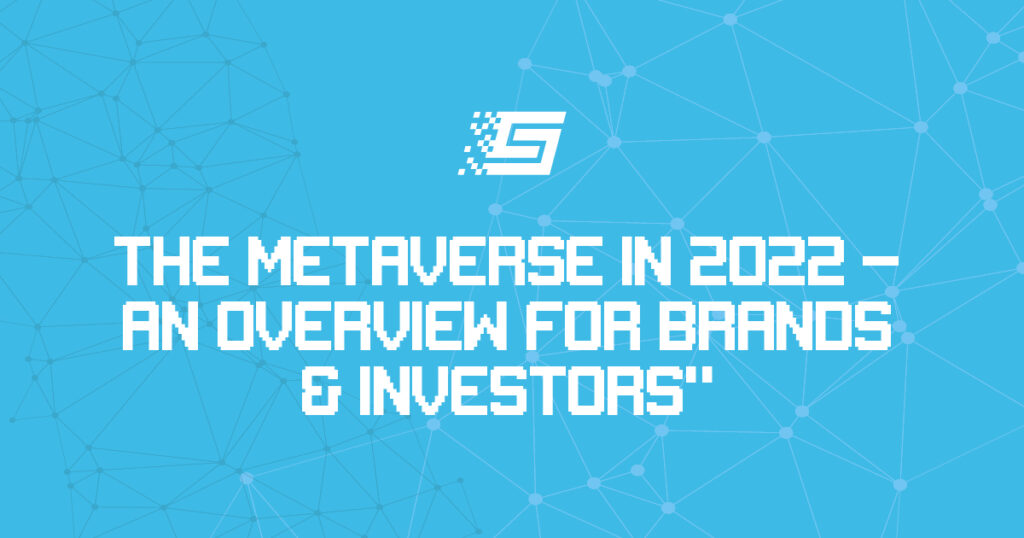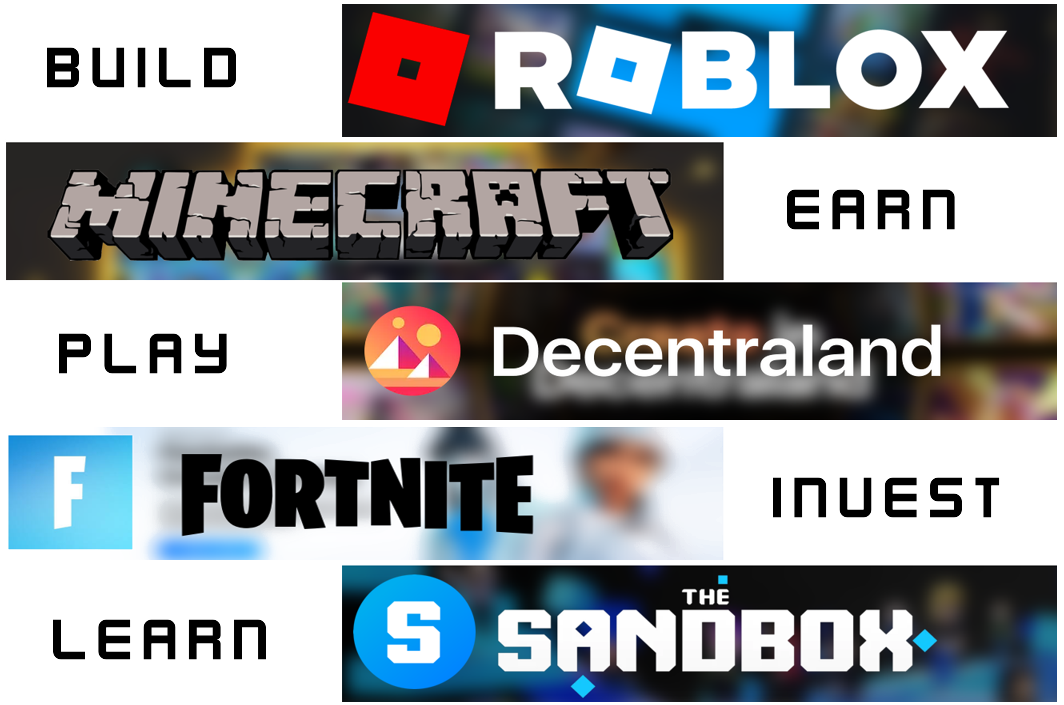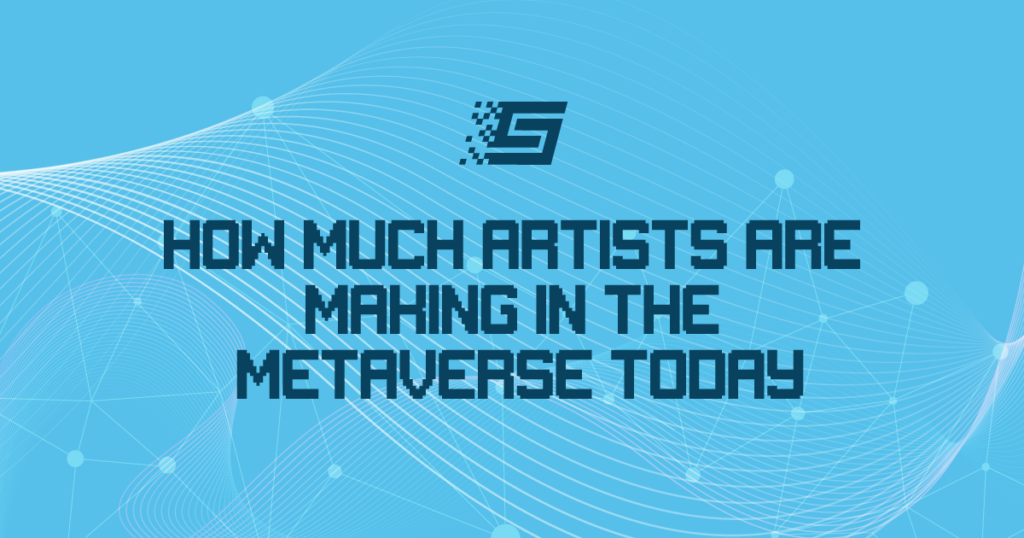
The Metaverse In 2022 – An Overview For Brands & Investors
Metaverse adoption has slowed down somewhat in 2022, but investors’ and developers’ enthusiasm remains strong. Here is an overview of the tech’s last 12 months.
Recognized as one of the most turbulent years for cryptocurrencies and the blockchain industry, 2022 was still vigorous for the metaverse in general with over $120 billion invested in the first half of the year alone, according to a McKinsey report, indicating that the industry is anything but broken.
Some significant partnerships were sealed throughout 2022, with a few unexpected institutions. JP Morgan embraced the web3 revolution despite their proverbial distaste for the decentralization concept, among other big companies.
Here is what you need to know about influential developments, projects, and events that have helped shape the metaverse in 2022.
The underlying technologies of the metaverse include AI (artificial intelligence), blockchain, the Internet of Things, AR (augmented reality), VR (virtual reality), and space from gaming applications for real estate ownership, branding opportunities, and opportunities to make use of interoperable collaborative tools.
These ingredients used together in the metaverse — in a centralized or decentralized manner — combine to create environments that enrich user interaction via the internet for an unlimited number of people simulating the real world.
Two Digital Cultures
The gap between centralized and decentralized metaverse platforms widened further in 2022, with The Sandbox and Decentraland platforms holding strong dominance across blockchain-based marketplaces. However, Meta and Microsoft’s vision to build proprietary digital universes that they can control completely accentuated the distance between the two digital cultures.
The metaverse in its current form relates to digital worlds that are accessible by immersive technologies and the internet. All of the developments experienced today are considered “pre-metaverse”. A recent report by Gartner brought to light low expectations of mainstream adoption and a projection that full technology maturity won’t take place until around the year 2030.
Nonetheless, institutions and businesses are aware that they have to start crafting their strategy now if they are to become leaders in what will surely be a highly competitive space over the coming years.
The Tech Giants
Facebook rebranded to become Meta in October 2021, marking a commitment to advancing from being a social media network and embracing the new world of web3. However, despite announcing investments of $10 – 15 billion per year, the company reported significant losses in 2022, with stock price falling by 23.6% after its release and 66.29% in total over the past year. An accumulated loss of over $9 billion in the research and development department was also reported.
Microsoft announced last year the $69-billion acquisition of gaming company Activision Blizzard, a key player in the industry with an ever-growing portfolio of AAA (high-budget and high-profile) video games and roughly 400 million monthly active users.
The deal is still being scrutinized by regulators, however, with the United States Federal Trade Commission challenging what is one of the most significant tech acquisitions in history in order to promote fair competition in subscription services and high-performance gaming consoles.
Nvidia launched the beta version of its “omniverse” platform for developers. The versatile platform allows anyone to build metaverse applications. For instance, developers can make use of AIs trained in virtual worlds, artists can pick from multiple 3D tools, and enterprises can build digital twin simulations of their industrial processes.
Financial Institutions
A number of major financial institutions expanded their presence in the metaverse in 2022 by partnering with powerful platforms in the space.
JP Morgan became the first major bank to enter the metaverse in February, opening a virtual lounge in Decentraland after labeling the industry as a $1-trillion market opportunity.
In the same month, Disney announced the appointment of a new executive, Mike White, to lead its debut into the metaverse. CEO Bob Chapek confirmed Disney’s commitment to expounding on its storytelling expertise to the digital world. “There is an opportunity to connect those universes and create a new paradigm for how audiences experience and engage with our stories”, he said.
HSBC bank and blockchain-based gaming platform The Sandbox announced that they are forming a partnership to open new opportunities to their global virtual communities by allowing them to connect through user-generated content, gaming, and entertainment.
Standard Chartered also joined forces with The Sandbox to offer their client base new creative and innovative experiences. Alex Manson, head of SC Ventures at Standard Chartered, confirmed, “Standard Chartered has been building business models in crypto and digital assets. We see the rise of the metaverse as a milestone in the web3 evolution”.
In June, the innovation and design company Journey sounded the first-ever opening bell in the metaverse along with Nasdaq to commemorate the launch of a new metaverse studio and also to mark specific endorsements of the industry by the stock market exchange.
In October, Norwegian governmental agency The Brønnøysund Register Center formed a partnership with Ernst & Young to open a virtual office in the Decentraland metaverse. The Norwegian authority takes care of several public registers for the country, and the aim of the move is to facilitate users’ access to public services as we start to see more widespread use of the metaverse.
Luxury Brands
The technology has already opened great opportunities for primary retailers to build their presence and gain new market segments by building their own virtual spaces in the metaverse.
Brands like Gucci, Louis Vuitton, and Burberry have all started appearing in the metaverse, with fashion being the top segment of the luxury market industry in terms of presence within the space. The industry’s expansion was further marked by the Metaverse Fashion Week, held in Decentraland in March.
Virtual Real Estate
The past year’s bearish trend in the crypto space was echoed across the virtual real estate market as well. Land sales were reported to have dropped by 85% in August, and volumes plunged from a peak of $1 billion in November 2021 to around $157 million in August.
Despite those negative figures, expectations for this section of the metaverse are still promising. According to a report by Chainalysis, blockchain-based virtual land prices grew by 879% over the past 2 years, while physical real estate prices grew by just 39%.
Decentraland is still where most of the action is taking place in the virtual real estate market, and it has seen astounding growth materializing in front of its eyes. Decentraland Foundation creative director Sam Hamilton commented on the progression: “When we first sold our land, it was all sold at $20 a pop. Now, the cheapest land you can buy is around $3,500. So, you can see that speculators have already made a lot of money from their investments”.
According to the global market research company Technavio, the virtual real estate market is expected to reach $5.37 billion in 2026 at a compound annual growth rate of 61.74%. Owning land in the metaverse could also be a lucrative business for rentals, so much so that Decentraland has launched a platform that allows users who own virtual land to become landlords/ladies.
Entertainment & The Arts
The entertainment and arts industries sparked a lot of interest in the metaverse in 2022, with live concerts, art events, and festivals entertaining crowds seeking opportunities beyond geographical limits.
Non-fungible token (NFT) collections and exhibitions are at the center of the metaverse experience, with live concerts dominating the entertainment side of things. Music stars including the likes of Ozzy Osbourne performed in the metaverse in 2022, and the famous U.S. festival Coachella embraced the metaverse utilizing NFTs, AR technology, and video games that both physical and virtual attendees could enjoy.
The Future Of The Metaverse
There are many reasons to believe that the metaverse will forge into a space that can be defined more accurately over the coming years. Its current state is still widely recognized as the pre-metaverse phase, but the tech will evolve into an advanced state sometime between 2024 and 2027.
In the mature phase that will follow, the metaverse will be complete with collaboration, interoperability, and multi-sourced experiences, allowing for more efficiency across all aspects of human lives.
Gartner predicted that by 2026, at least 25% of the world’s population will spend about one hour a day in the metaverse, while predictions for the market opportunities are mind-blowing. From $1 trillion, projected by Grayscale, to $5 trillion, estimated by McKinsey, the future couldn’t look brighter for the tech and its ecosystem.
With these kinds of figures, who will remember the 2022 bear market?


